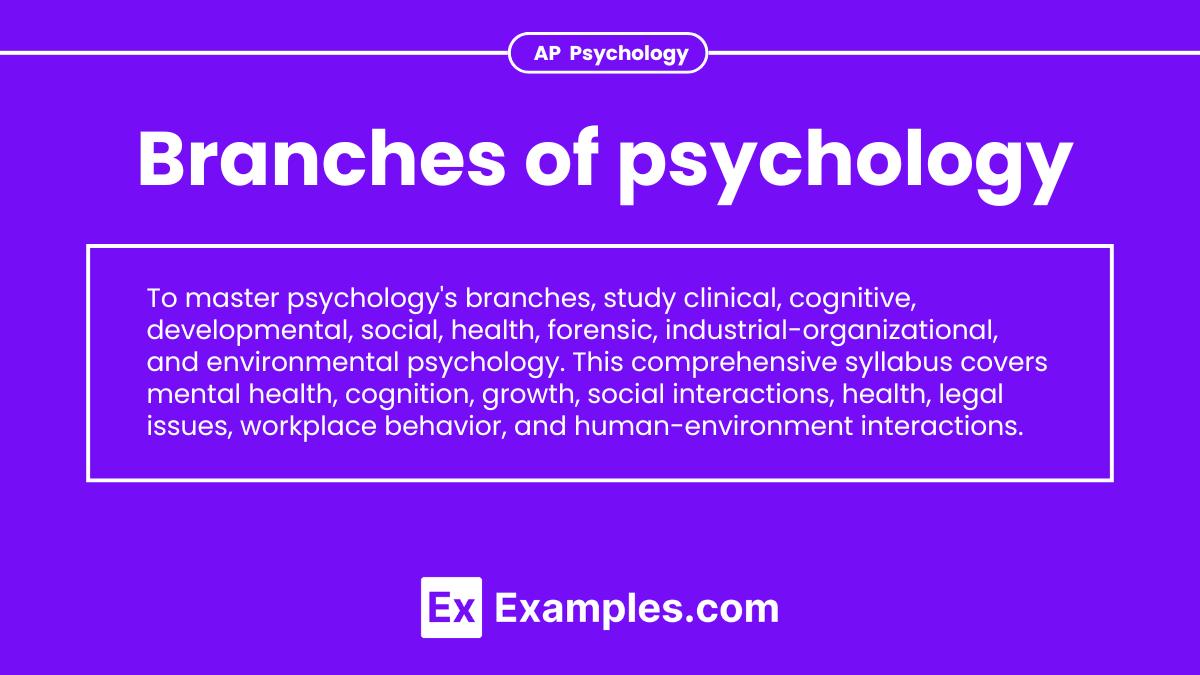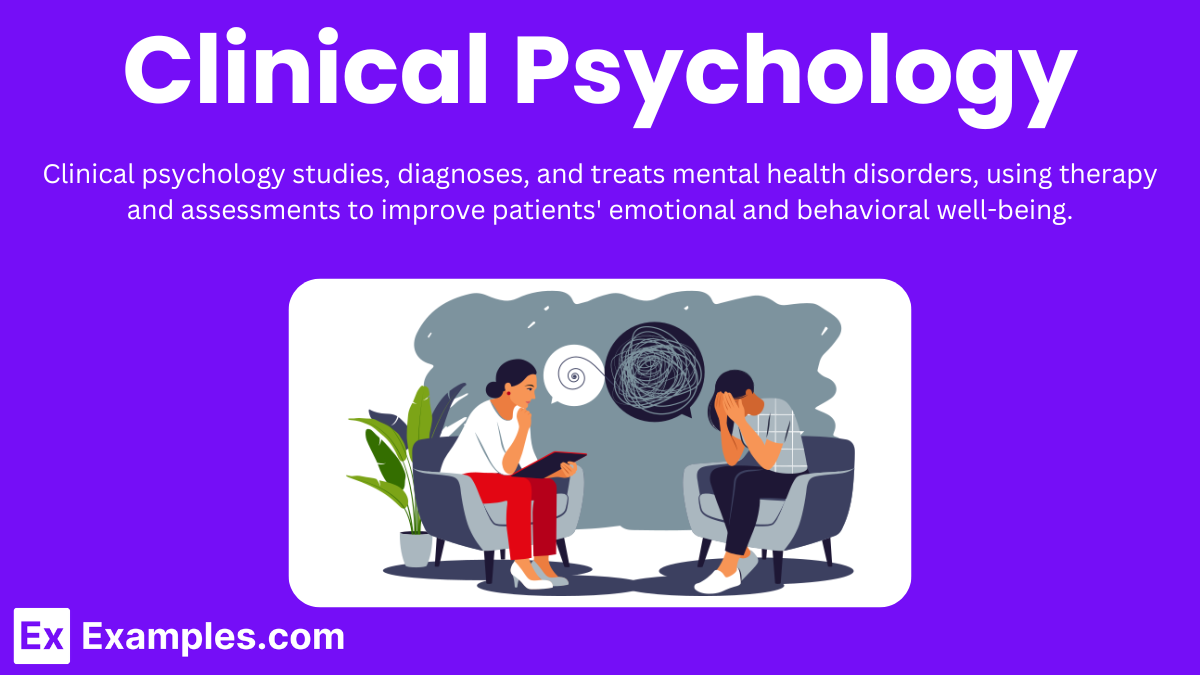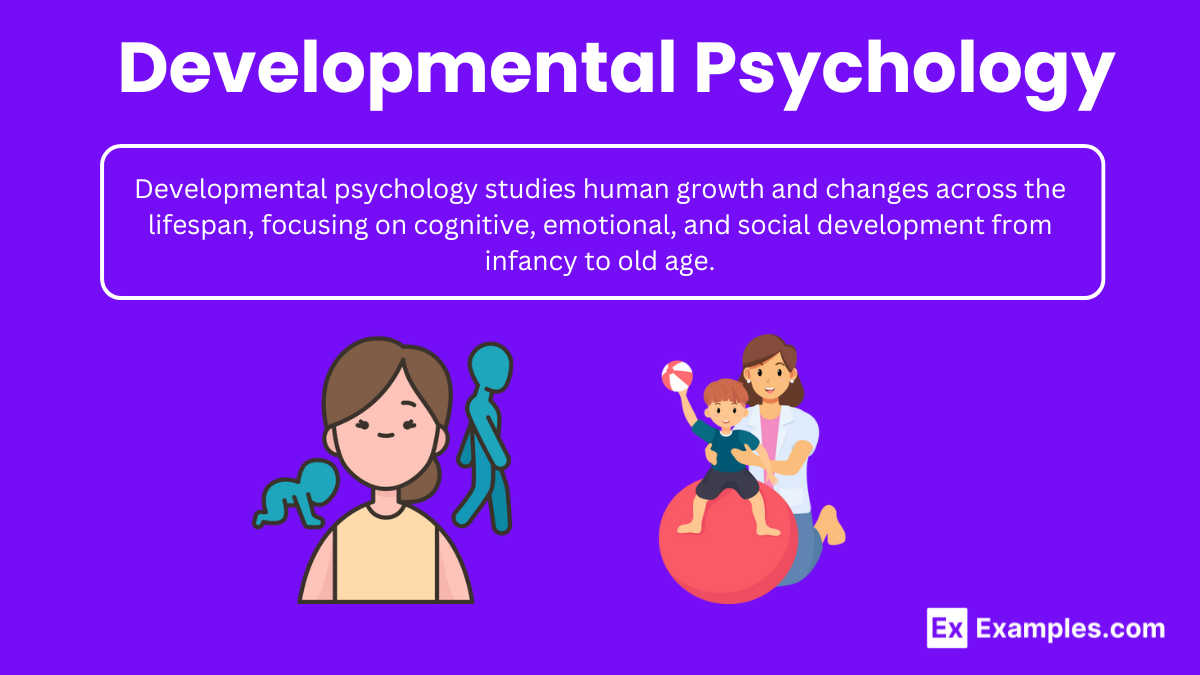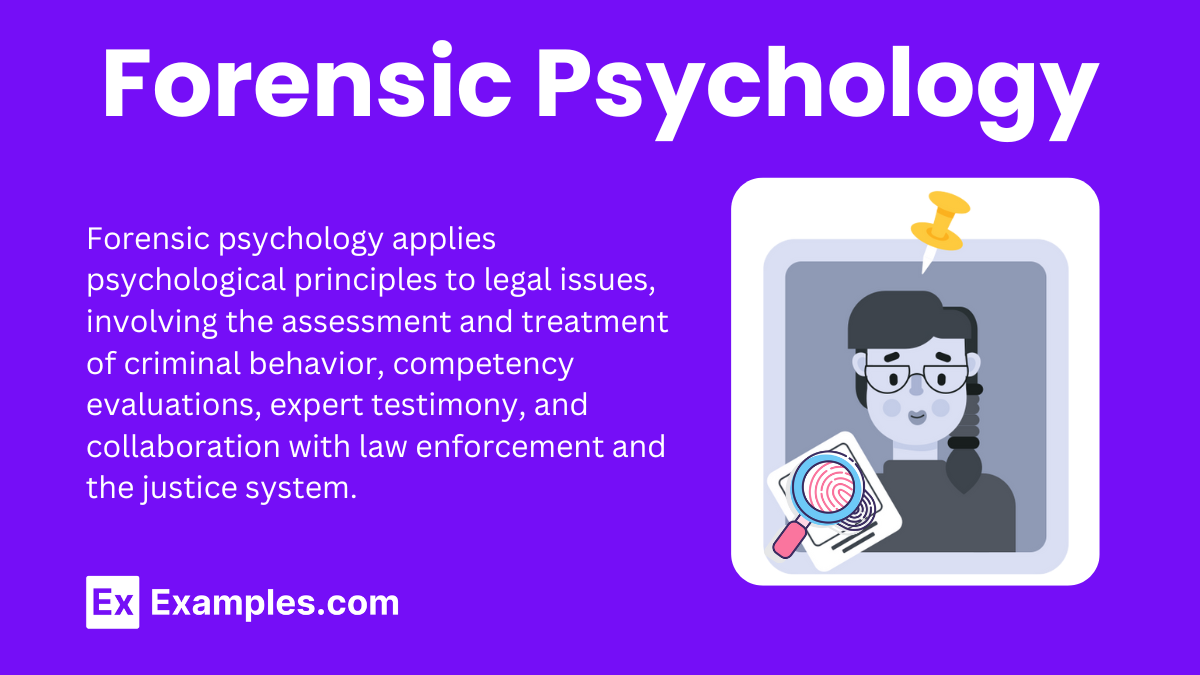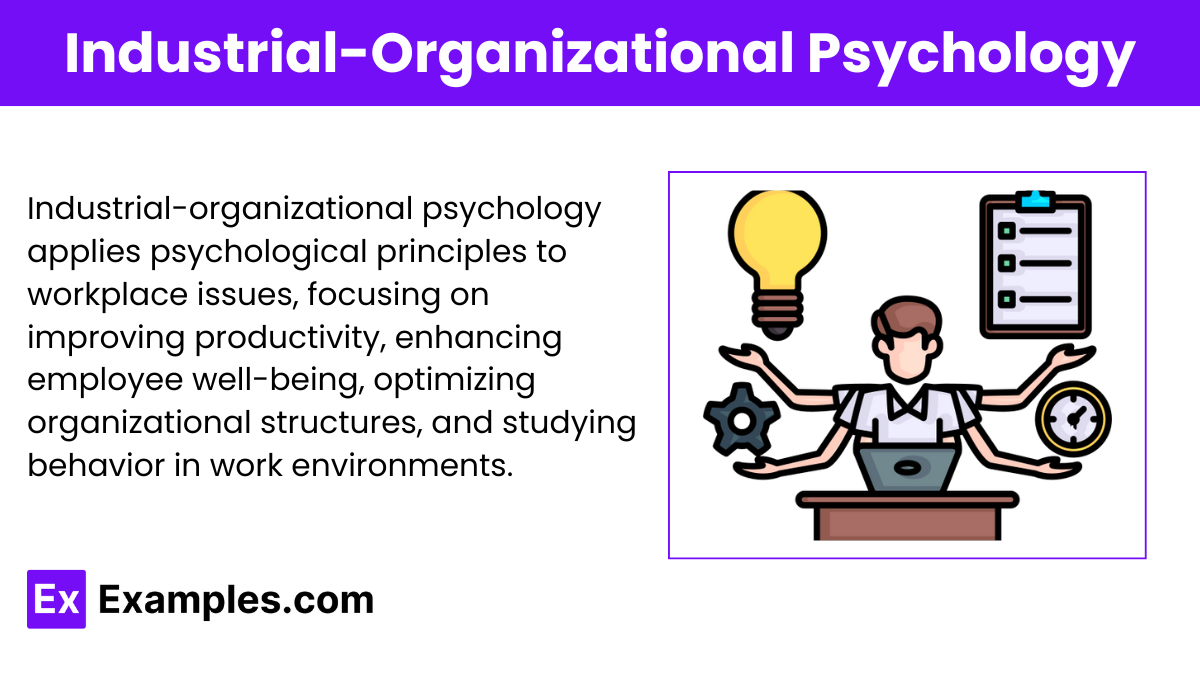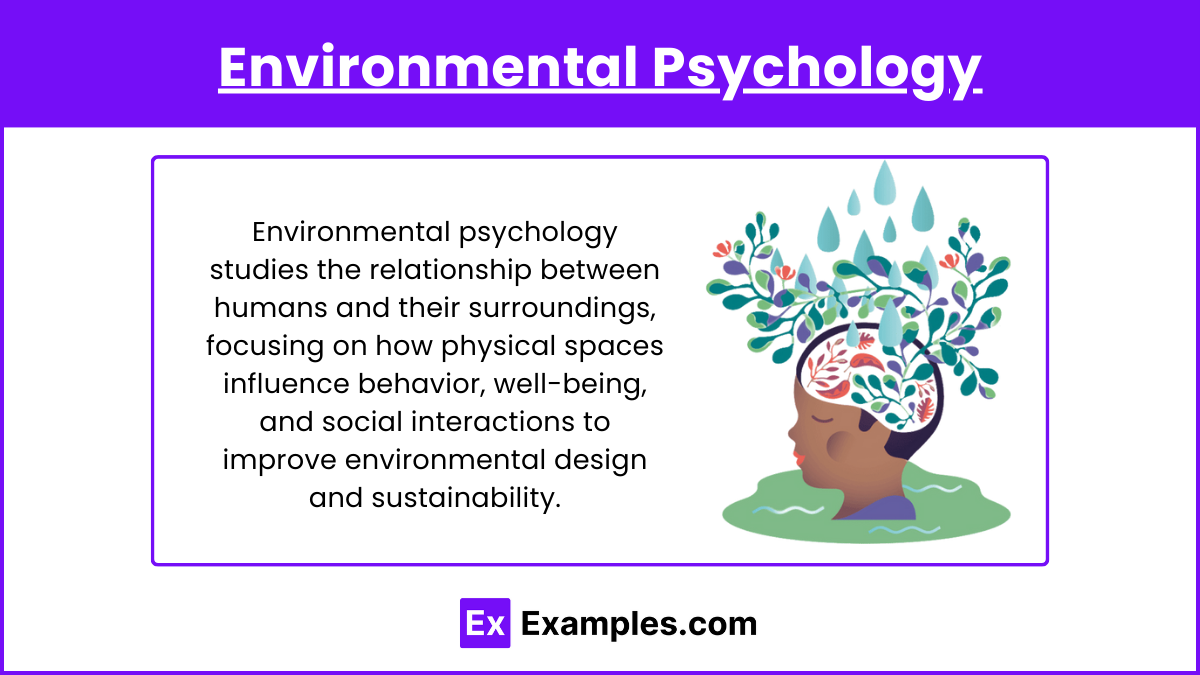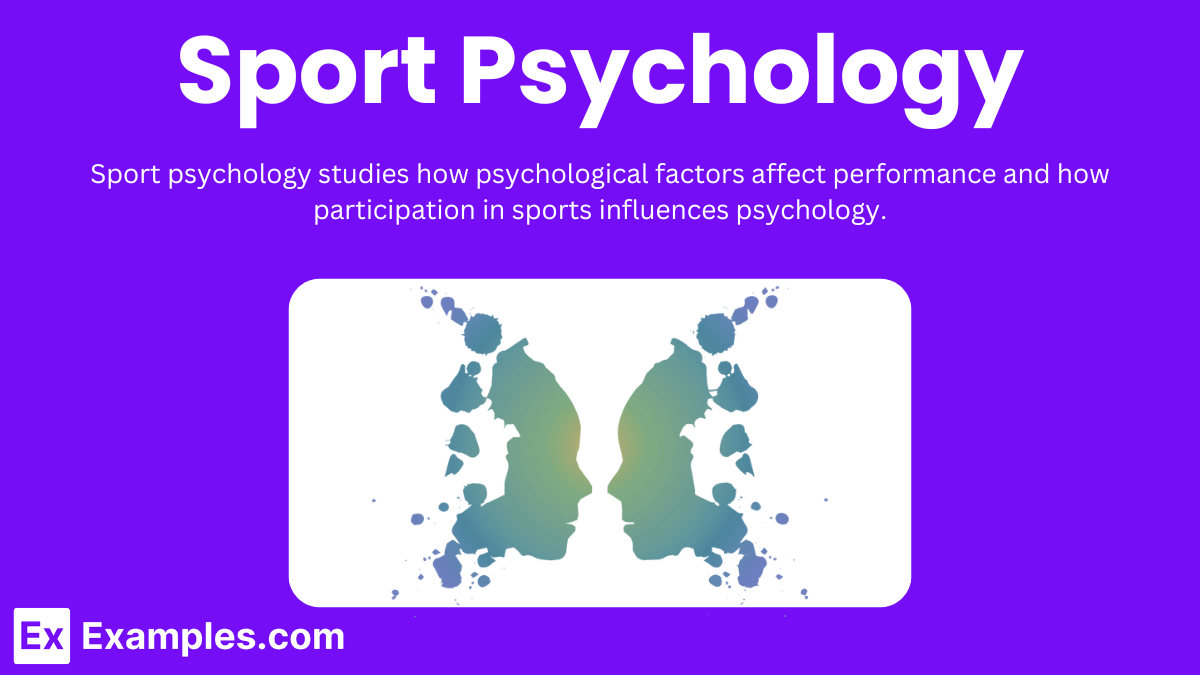The branches of psychology encompass various fields that study the mind and behavior, offering insights into different aspects of human experience. AP Psychology, a high school course, introduces students to these branches, including clinical psychology (mental health treatment), cognitive psychology (mental processes), developmental psychology (lifespan growth), social psychology (social interactions), health psychology (health and illness), forensic psychology (legal issues), industrial-organizational psychology (workplace behavior), and environmental psychology (human-environment interactions). Understanding these branches provides a comprehensive foundation in psychology.
Learning Objectives
To master the branches of psychology, focus on a syllabus that includes clinical psychology, which covers the diagnosis and treatment of mental health disorders; cognitive psychology, emphasizing mental processes like memory and problem-solving; developmental psychology, exploring growth across the lifespan; social psychology, examining how social interactions influence behavior; health psychology, understanding the psychological aspects of health and illness; forensic psychology, applying psychology to legal issues; industrial-organizational psychology, focusing on workplace behavior; and environmental psychology, studying the interplay between individuals and their surroundings. This comprehensive syllabus will provide a well-rounded understanding of the diverse fields within psychology, preparing you for various applications and career paths in this dynamic field.
1. Clinical Psychology
Definition and Scope :
Clinical psychology involves the assessment, diagnosis, treatment, and prevention of mental health issues. Clinical psychologists work with individuals, families, and groups to address a wide range of psychological problems, including:
Mood disorders: Depression, bipolar disorder
Anxiety disorders: Generalized anxiety disorder, panic disorder, social anxiety
Personality disorders: Borderline personality disorder, narcissistic personality disorder
Psychotic disorders: Schizophrenia, schizoaffective disorder
Behavioral disorders: ADHD, conduct disorder
Trauma-related disorders: PTSD, complex trauma
Assessment and Diagnosis
Clinical interviews: Structured or semi-structured conversations to gather information about the patient's history and current functioning
Psychological testing: Standardized tests to measure cognitive, emotional, and behavioral aspects
Behavioral observations: Monitoring and recording behavior in different settings
Self-report questionnaires: Surveys and checklists completed by the patient to provide insights into their symptoms and experiences
Treatment Approaches
Cognitive-Behavioral Therapy (CBT) : CBT is a widely used approach that focuses on identifying and changing negative thought patterns and behaviors. It is effective for treating anxiety, depression, and other mood disorders.
Psychodynamic Therapy : This approach explores unconscious processes and unresolved conflicts from the past that influence current behavior. It aims to increase self-awareness and understanding of emotional issues.
Humanistic Therapy : Humanistic therapy emphasizes personal growth, self-acceptance, and finding meaning in life. Techniques include client-centered therapy, which provides a supportive environment for self-exploration.
Dialectical Behavior Therapy (DBT) : DBT combines cognitive-behavioral techniques with mindfulness practices. It is particularly effective for treating borderline personality disorder and other conditions involving emotional dysregulation.
Family and Couples Therapy : These therapies focus on improving communication, resolving conflicts, and strengthening relationships within families and couples. They address issues that affect the entire family system.
Mindfulness-Based Therapies : These approaches incorporate mindfulness practices to help individuals become more aware of their thoughts and feelings. Techniques include Mindfulness-Based Stress Reduction (MBSR) and Mindfulness-Based Cognitive Therapy (MBCT).
2. Cognitive Psychology
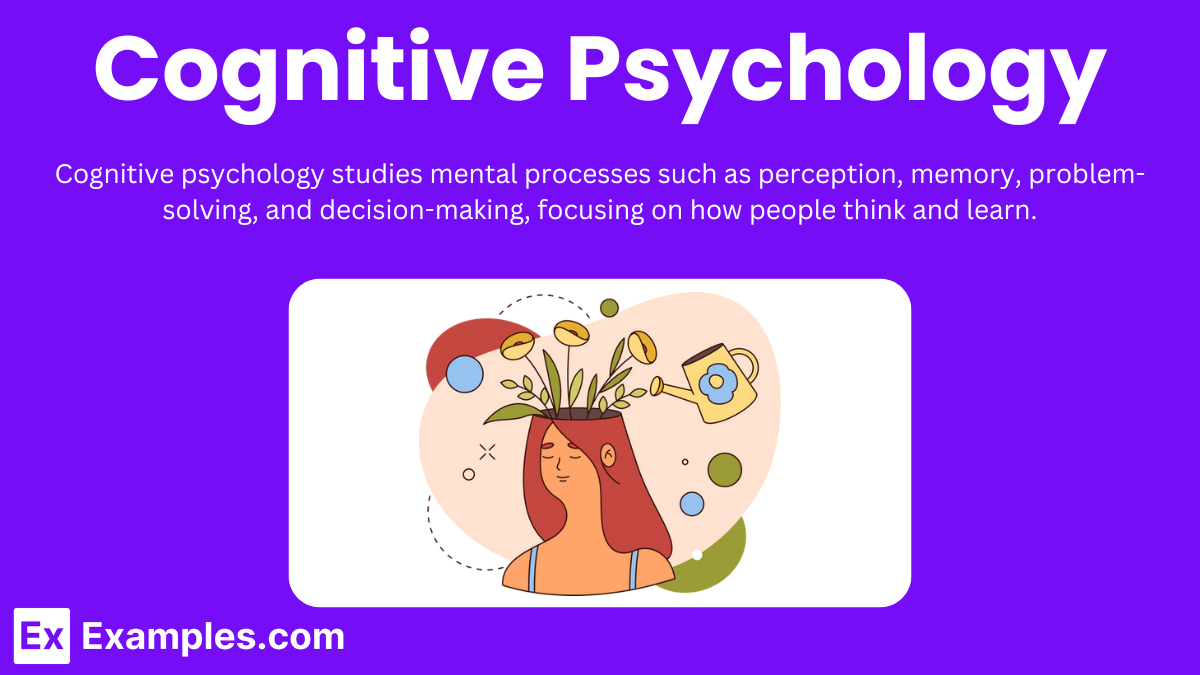
Definition and Scope
Cognitive psychology focuses on the scientific study of the mind and how it processes information. This field examines various cognitive functions, including:
Perception: How we interpret sensory information
Attention: How we focus on specific stimuli
Memory: How we encode, store, and retrieve information
Language: How we understand and produce language
Thinking: How we reason, solve problems, and make decisions
Key Concepts and Theories
Information Processing Theory
Encoding: Taking in information through sensory input
Storage: Maintaining information over time
Retrieval: Accessing stored information when needed
Schema Theory : Schema theory proposes that knowledge is organized into units called schemas, which are mental structures that help us organize and interpret information. Schemas influence how we perceive new information and can lead to biases and stereotypes.
Cognitive Load Theory : Cognitive load theory examines the amount of mental effort being used in the working memory. It suggests that our cognitive capacity is limited, and excessive cognitive load can hinder learning and problem-solving.
Dual-Process Theory
System 1: Fast, automatic, and unconscious thinking (e.g., recognizing a face)
System 2: Slow, deliberate, and conscious thinking (e.g., solving a math problem)
3. Developmental Psychology
Definition and Scope
Developmental psychology focuses on understanding the patterns and processes of growth and change over time. This field examines the influence of biological, environmental, and cultural factors on development.
Key Concepts and Theories
Stages of Development : Theories propose that development occurs in distinct stages, each characterized by specific milestones and challenges. Notable stage theories include Jean Piaget's stages of cognitive development and Erik Erikson's stages of psychosocial development.
Nature vs. Nurture : Nature vs. Nurture is a ongoing debate about the relative contributions of genetic inheritance (nature) and environmental factors (nurture) to human development. Most developmental psychologists agree that both play crucial roles.
Attachment Theory: Proposed by John Bowlby, this theory emphasizes the importance of early emotional bonds between infants and their caregivers. Secure attachment is associated with positive developmental outcomes, while insecure attachment can lead to difficulties.
Critical and Sensitive Periods : Critical periods are specific times during development when certain skills or abilities must be acquired. Sensitive periods are times when the brain is particularly receptive to learning specific skills, but the learning can still occur outside this period, though less efficiently.
Cognitive Development : The study of how thinking, problem-solving, and decision-making skills evolve over time. Piaget's theory of cognitive development is a foundational framework, outlining stages such as sensorimotor, preoperational, concrete operational, and formal operational.
Social Development : The process by which individuals learn to interact with others and develop social skills. This includes understanding social norms, forming friendships, and developing empathy.
Moral Development : The study of how individuals develop a sense of right and wrong. Lawrence Kohlberg's stages of moral development describe how moral reasoning matures through preconventional, conventional, and postconventional stages.
4. Evolutionary Psychology
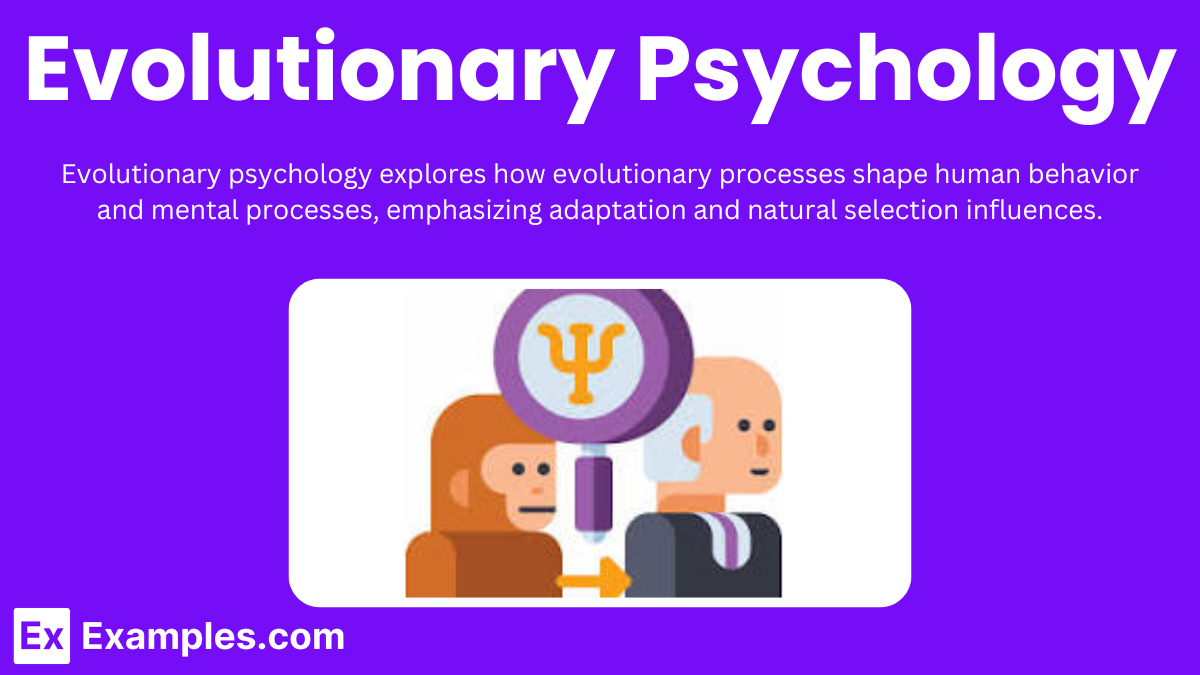
Definition and Scope
Evolutionary psychology focuses on the role of evolution in shaping the human mind and behavior. This field examines how ancestral environmental pressures influenced the development of psychological mechanisms that aid in survival and reproduction.
Key Concepts and Theories
Adaptation : The process by which traits that enhance survival and reproduction become more common in a population over generations. Psychological adaptations are traits that have evolved to solve specific problems faced by our ancestors.
Natural Selection : The mechanism by which individuals with advantageous traits are more likely to survive and reproduce, passing these traits to future generations. Evolutionary psychologists study how behaviors and mental processes have been naturally selected to enhance fitness.
Sexual Selection : A form of natural selection where traits that increase an individual's chances of attracting a mate and reproducing become more common. This includes traits such as physical attractiveness, social status, and behaviors that display resources or skills.
Parental Investment Theory : The idea that the sex investing more in offspring (typically females) will be more selective in mate choice, while the less-investing sex (typically males) will compete for access to mates. This theory helps explain differences in mating strategies and behaviors between males and females.
Kin Selection : A theory suggesting that behaviors that help a genetic relative are favored by natural selection. Helping relatives can increase an individual's inclusive fitness, which includes the survival of shared genes in the population.
Reciprocal Altruism : The concept that individuals may act altruistically if they expect the favor to be returned in the future. This behavior can enhance survival and reproduction by fostering cooperative relationships.
Modularity of Mind : The idea that the mind consists of specialized modules, each evolved to handle specific adaptive problems. These modules operate independently to process different types of information, such as language, social interactions, and spatial navigation.
5. Forensic Psychology
Definition and Scope
Forensic psychology focuses on the intersection of psychology and the law. This field encompasses a wide range of activities, including criminal profiling, competency evaluations, and providing psychological services to individuals involved in the legal system.
Key Concepts and Theories
Criminal Profiling : The process of identifying personality traits, behaviors, and demographics of criminal offenders based on crime scene evidence and patterns. Profilers help law enforcement agencies narrow down suspects and predict future offenses.
Competency to Stand Trial : The assessment of a defendant's mental state to determine if they can understand the charges against them and participate in their own defense. Forensic psychologists evaluate cognitive and emotional functioning to provide recommendations to the court.
Insanity Defense : A legal defense asserting that a defendant was unable to understand the nature of their crime or distinguish right from wrong due to a mental disorder at the time of the offense. Forensic psychologists assess the defendant's mental state to inform legal decisions.
Risk Assessment : Evaluating the likelihood that an individual will engage in future criminal behavior or violence. This involves assessing factors such as past behavior, mental health, and social environment to inform decisions about sentencing, parole, and treatment.
Child Custody Evaluations : Assessing the psychological well-being of children and parents in custody disputes. Forensic psychologists provide recommendations to the court regarding the best interests of the child, considering factors like parenting ability and family dynamics.
Eyewitness Testimony : Studying the reliability and accuracy of witness recollections in legal cases. Forensic psychologists investigate factors that influence memory, such as stress, suggestibility, and the passage of time, to evaluate the credibility of eyewitnesses.
Interrogation Techniques : Analyzing methods used to obtain confessions and information from suspects. Forensic psychologists examine the psychological impact of different interrogation strategies and work to prevent false confessions and coercive practices.
6. Health Psychology

Definition and Scope
Health psychology examines how psychological factors affect physical health and how individuals cope with illness. This field integrates research and practice to promote healthy behaviors, enhance patient care, and improve public health outcomes.
Key Concepts and Theories
Biopsychosocial Model :A comprehensive approach that considers biological, psychological, and social factors as interconnected influences on health is akin to viewing health within an ecosystem. This model emphasizes that health and illness result from a combination of these factors, rather than solely biological causes. By recognizing the intricate interplay within this ecosystem, we gain a holistic understanding of what impacts our well-being..
Health Belief Model : A psychological model that explains and predicts health behaviors by focusing on individual beliefs about health conditions. It includes components such as perceived susceptibility, perceived severity, perceived benefits, perceived barriers, and self-efficacy.
Theory of Planned Behavior : A theory that links beliefs and behavior, suggesting that an individual's intention to engage in a behavior is influenced by their attitude toward the behavior, subjective norms, and perceived behavioral control.
Stress and Coping : The study of how stress affects health and how individuals cope with stress. Effective coping strategies, such as problem-solving and seeking social support, can mitigate the negative effects of stress on health.
Behavior Change Interventions : Techniques to modify unhealthy behaviors and promote healthy ones, such as motivational interviewing, cognitive-behavioral therapy, and self-monitoring, can address issues like climate change.
Adherence to Treatment : The extent to which patients follow medical advice and treatment regimens. Health psychologists develop strategies to improve adherence, such as patient education, reminder systems, and addressing barriers to compliance.
Chronic Illness Management : The psychological aspects of living with chronic illnesses, such as diabetes, heart disease, and cancer. Health psychologists help patients manage symptoms, adhere to treatment plans, and maintain quality of life.
7. Industrial-Organizational Psychology
Definition and Scope
Industrial-organizational psychology examines the behavior of individuals and groups within organizational settings. This field aims to understand and improve workplace dynamics, enhance employee performance, and foster a positive organizational culture.
Key Concepts and Theories
Job Analysis : The systematic study of job roles and responsibilities to identify the skills, knowledge, and abilities required for effective performance. Job analysis informs recruitment, selection, and training processes.
Employee Selection : The process of hiring suitable candidates involves I-O psychologists developing and validating selection methods like interviews, psychometric tests, and assessment centers, ensuring compliance with the privacy policy.
Performance Appraisal : Evaluating employee performance to provide feedback, set goals, and make decisions about promotions and compensation. Effective appraisal systems use objective criteria and multiple sources of feedback.
Training and Development : Designing and implementing programs to enhance employees' skills and knowledge. I-O psychologists assess training needs, develop training materials, and evaluate the effectiveness of training programs.
Motivation : Understanding what drives employees to perform at their best. Theories such as Maslow's hierarchy of needs, Herzberg's two-factor theory, and self-determination theory explain various aspects of workplace motivation.
Leadership : Studying the characteristics and behaviors of effective leaders, including transformational leadership, which inspires and motivates, and transactional leadership, which emphasizes rewards and punishments.
Organizational Culture: The shared values, beliefs, and norms that influence how employees behave in an organization. A positive culture promotes engagement, collaboration, and ethical behavior.
Workplace Diversity : The inclusion and management of diverse individuals within the workplace. I-O psychologists develop strategies to promote diversity and inclusion, reduce bias, and create equitable work environments.
Work-Life Balance : Helping employees manage their work responsibilities alongside personal and family needs. I-O psychologists design policies and practices that support flexible working arrangements and reduce job-related stress.
Occupational Health and Safety : Ensuring the physical and psychological well-being of employees. I-O psychologists identify workplace hazards, develop safety protocols, and promote mental health initiatives.
8. Neuropsychology
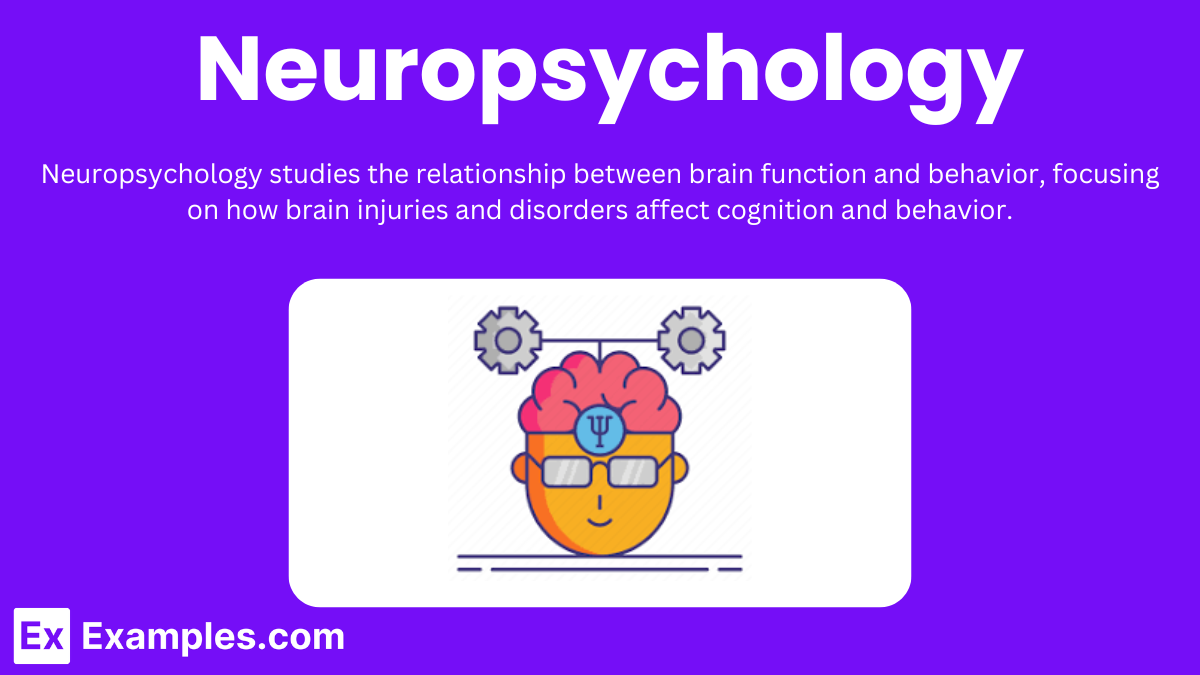
Definition and Scope
Neuropsychology focuses on how brain injuries, diseases, and disorders impact mental functions and behaviors. This field combines principles from psychology and neuroscience to explore topics such as:
Cognitive functions: Memory, attention, language, and executive functions
Behavioral changes: Emotional regulation, personality, and social behavior
Brain-behavior relationships: Understanding how specific brain areas relate to particular functions
Key Concepts and Theories
Brain Localization : The concept that specific brain areas are responsible for specific functions. Early neuropsychologists like Paul Broca and Carl Wernicke identified brain regions linked to speech and language, highlighting how damage to these areas impairs specific functions.
Hemispheric Specialization : The theory that the left and right hemispheres of the brain have specialized functions. The left hemisphere is typically associated with language and analytical tasks, while the right hemisphere is linked to spatial abilities and creativity.
Neuroplasticity :Neuroplasticity, the brain's ability to form new neural connections, explains how it recovers from injuries and adapts to changes, with proteins playing a crucial role in rehabilitation.
Cognitive Rehabilitation : Therapeutic interventions designed to improve cognitive functions affected by brain injury or neurological disorders. Techniques include memory training, problem-solving exercises, and compensatory strategies.
Assessment Techniques : Neuropsychologists use various tools to evaluate cognitive functions, including standardized tests, structured interviews, and behavioral observations. Common assessments include the Wechsler Adult Intelligence Scale (WAIS) and the Wisconsin Card Sorting Test (WCST).
9. Social Psychology
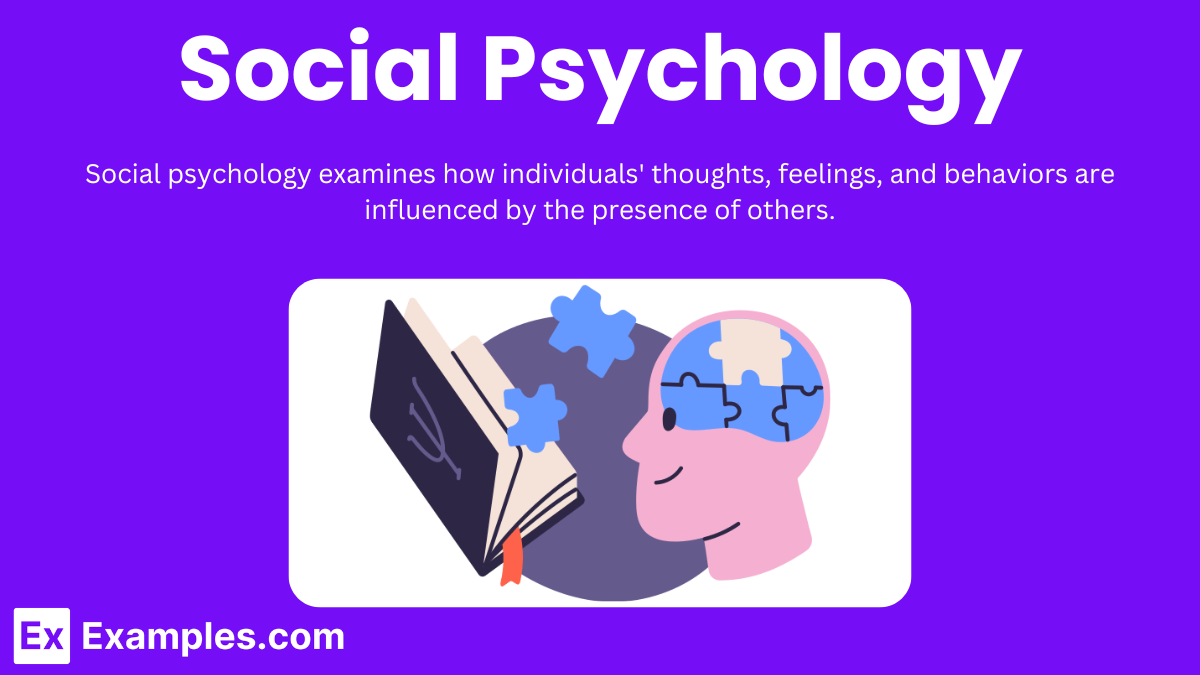
Definition and Scope
Social psychology focuses on understanding how people are affected by their social surroundings. This includes examining:
Social perception: How we form impressions and make judgments about others
Social influence: How the behavior and opinions of others affect our own behavior
Interpersonal relationships: How relationships form, develop, and affect our behavior
Group dynamics: How group membership and group interactions influence behavior
Social identity: How we define ourselves in relation to social groups
Key Concepts and Theories
Social Perception and Attribution : Social perception involves the processes by which we form impressions of and make inferences about other people. Attribution theory explores how individuals explain the causes of behavior and events, distinguishing between:
Internal (dispositional) attributions: Ascribing behavior to personal characteristics
External (situational) attributions: Ascribing behavior to environmental factors
Social Influence : Social influence encompasses various ways people affect one another, including:
Conformity: Adjusting behavior or thinking to align with a group standard (e.g., Solomon Asch's conformity experiments)
Compliance: Agreeing to a request from another person (e.g., techniques like foot-in-the-door and door-in-the-face)
Obedience: Following direct commands from an authority figure (e.g., Stanley Milgram's obedience studies)
Group Dynamics : Group dynamics explore how being part of a group influences behavior. Key phenomena include:
Group polarization: The tendency for group discussion to strengthen the dominant position held by individual group members
Groupthink: The practice of thinking or making decisions as a group, often resulting in unchallenged, poor-quality decision-making
Social facilitation: Improved performance on tasks in the presence of others
Social loafing: Reduced effort by individuals when they work in groups compared to when they work alone
Social Identity and Self-Concept : Social identity theory (Henri Tajfel and John Turner) posits that a person’s sense of who they are is based on their group memberships. This includes:
In-group favoritism: Preferring members of one's own group over those in other groups
Out-group discrimination: Viewing and treating members of other groups negatively
Prejudice and Discrimination : Prejudice and discrimination involve unjustified negative attitudes and behaviors toward individuals based on their group membership. Theories explaining these phenomena include:
Realistic conflict theory: Prejudice arises from competition between groups for scarce resources
Social learning theory: Prejudice is learned through observation and imitation of others
Interpersonal Relationships : Interpersonal relationships involve emotional and social connections between individuals.
Attachment theory: Early relationships with caregivers influence later relationship patterns
Social exchange theory: Relationships are formed based on the rewards and costs experienced by the individuals involved
10. Educational Psychology
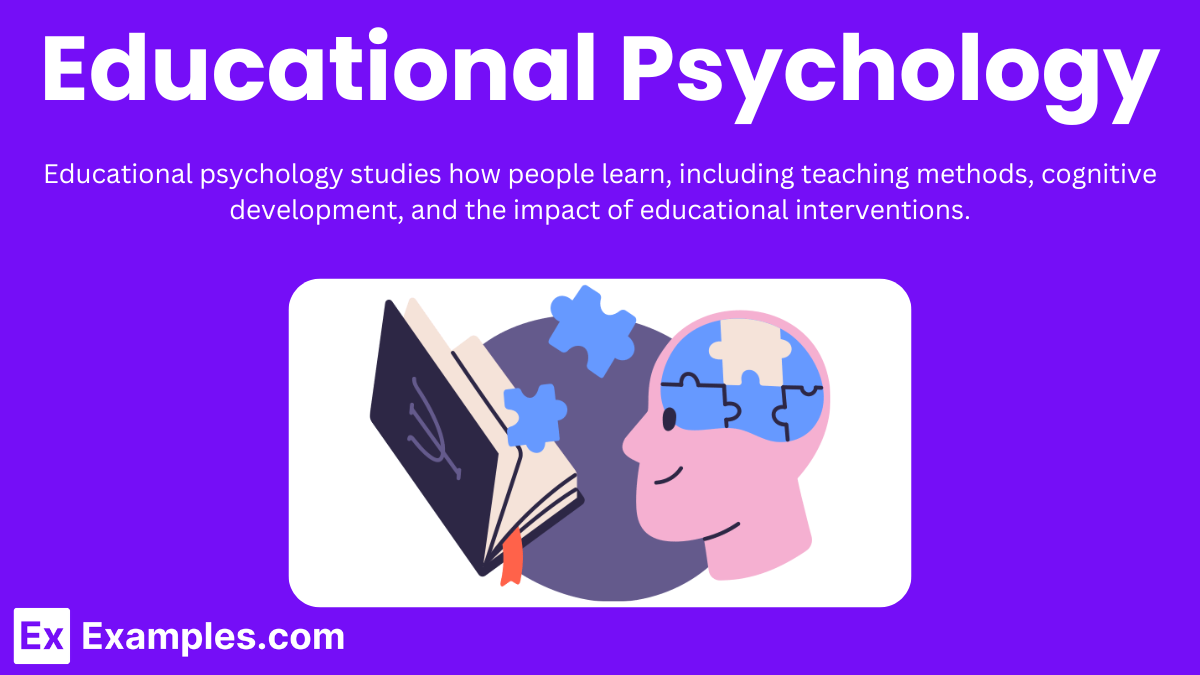
Definition and Scope
Educational psychology focuses on understanding and improving how students acquire and retain knowledge. This field examines:
Learning processes: How students absorb, process, and retain information
Instructional methods: Effective teaching strategies and techniques
Motivation: Factors that drive students to learn and achieve
Cognitive development: Changes in thinking, problem-solving, and information processing across ages
Assessment: Methods to evaluate learning and educational progress
Individual differences: Understanding diverse learning needs and styles
Key Concepts and Theories
Cognitive Development : Cognitive Development is Growth of thinking, problem-solving, and understanding abilities over time.
Sensorimotor stage (0-2 years): Learning through sensory experiences and actions
Preoperational stage (2-7 years): Developing language and symbolic thinking, but with egocentric and intuitive thought
Concrete operational stage (7-11 years): Logical thinking about concrete events and understanding conservation
Formal operational stage (12 and up): Abstract and systematic thinking, reasoning about hypothetical problems
Socio-Cultural Theory : Learning through social interactions and cultural context shaping cognition.
Zone of Proximal Development (ZPD): The difference between what a learner can do independently and with guidance
Scaffolding: Support provided by teachers or peers to help students learn within their ZPD
Behavioral Theories : Behavioral theories study how environment influences observable behavior through learning.
Classical conditioning (Ivan Pavlov): Learning through association between stimuli
Operant conditioning (B.F. Skinner): Learning through reinforcement and punishment to shape behavior
Constructivism : Constructivism posits knowledge is actively constructed through personal experiences.
Jean Piaget: Emphasized individual cognitive construction of knowledge
Lev Vygotsky: Highlighted social and cultural context in constructing knowledge
Information Processing Theory : Information processing theory compares the mind to a computer system.
Encoded: Taking in information through sensory input
Stored: Maintaining information over time
Retrieved: Accessing stored information when needed
Motivation Theories : Motivation theories explore what drives individuals to achieve goals.
Maslow's Hierarchy of Needs: Prioritizes fulfilling basic needs (e.g., safety, love) before higher-level psychological needs (e.g., self-actualization)
Self-Determination Theory (Deci and Ryan): Focuses on intrinsic and extrinsic motivation, emphasizing autonomy, competence, and relatedness
11. Environmental Psychology
Definition and Scope
Environmental psychology focuses on understanding the relationship between humans and their environments. This includes studying how natural and built environments influence:
Behavior: Actions and activities of individuals in different settings
Perception: How people perceive and interpret their surroundings
Well-being: Physical and mental health impacts of environments
Social interactions: How environments facilitate or hinder social relationships
Environmental sustainability: Promoting behaviors that support ecological health
Key Concepts and Theories
Place Attachment : Place attachment refers to the emotional bond between individuals and specific locations. This connection can influence behaviors and attitudes toward these places, including a sense of belonging and identity.
Environmental Stress : Environmental stress examines how certain environments can cause stress and how individuals cope with it. Stressors may include noise, overcrowding, pollution, and inadequate lighting. Understanding these stressors can lead to better design and policy decisions to mitigate their effects.
Restorative Environments : Restorative environments are spaces that help individuals recover from stress and mental fatigue. Natural settings, such as parks and green spaces, are often considered restorative due to their calming and rejuvenating effects.
Proxemics : Proxemics studies how people use space in social interactions. It includes personal space, territoriality, and crowding. Understanding proxemics can improve the design of public spaces and workplaces to enhance comfort and productivity.
Environmental Perception : Environmental perception explores how people perceive and interpret their surroundings. This includes sensory experiences (sight, sound, smell) and cognitive processes (attention, memory). Designers use these insights to create spaces that are visually appealing and functional.
12. Sport Psychology
Definition and Scope:
Sport psychology involves the study and application of psychological principles to sports and exercise. It addresses various aspects such as:
Performance enhancement: Techniques to improve focus, confidence, and motivation
Mental health: Managing stress, anxiety, and burnout
Team dynamics: Building cohesion and effective communication among team members
Injury rehabilitation: Psychological support during recovery from injuries
Youth sports: Promoting healthy development and a positive sporting experience for young athletes
Key Concepts and Techniques
Goal Setting : Setting specific, measurable, attainable, relevant, and time-bound (SMART) goals helps athletes stay focused and motivated. Goal setting can improve performance by providing clear objectives and a sense of direction.
Mental Imagery : Mental imagery, or visualization, involves creating mental pictures of successful performance. This technique helps athletes rehearse skills, reduce anxiety, and enhance confidence.
Self-Talk : Positive self-talk involves using affirmations to boost confidence and focus. Athletes use critical thinking to recognize and replace detrimental negative self-talk with positive statements.
Relaxation Techniques : Techniques such as deep breathing, progressive muscle relaxation, and meditation help athletes manage stress and maintain composure under pressure.
Concentration and Focus : Sport psychologists teach athletes strategies to improve concentration, such as focusing on the present moment, using cue words, and developing pre-performance routines.
Motivation : Understanding intrinsic and extrinsic motivation helps athletes stay committed to their training and competition. Sport psychologists work to enhance athletes' internal drive and enjoyment of the sport.
Coping with Pressure : Athletes learn how to handle competitive pressure through techniques like cognitive restructuring, which involves changing negative thought patterns, and stress inoculation training, which prepares them for stressful situations.

